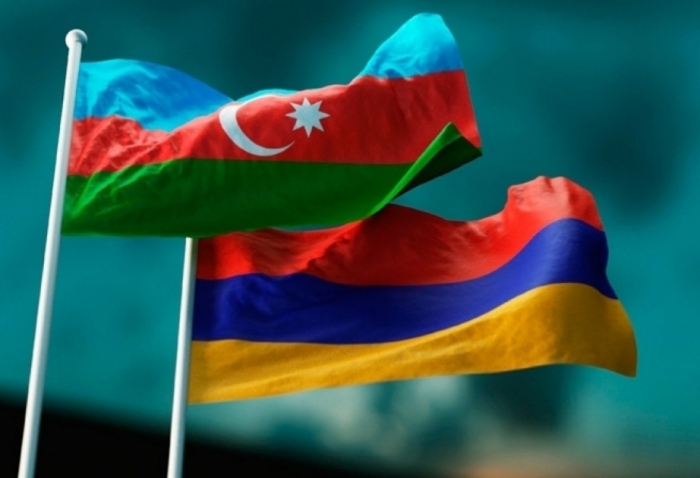Azerbaijan’s decisive victory in the 2020 Second Karabakh War and the subsequent localized anti-terrorist measures implemented on September 19-20, 2023, in the historic Karabakh region of Azerbaijan, which had been occupied since the 1990s by ethnic Armenian separatists backed by Armenia, has created a new and unique opportunity for rapprochement between Armenia and Azerbaijan through a direct bilateral track. There are three important dimensions in this context, and some tangible results are already in place.
The first dimension relates to the high-level decision-making process, which demonstrates the political will of the leaderships of both states. In fact, the Azerbaijani and Armenian governments announced, in a joint statement on December 7, 2023, that “there is a historical chance to achieve a long-awaited peace in the region,” and both countries “reconfirm their intention to normalize relations and to reach [a] peace treaty on the basis of respect for the principles of sovereignty and territorial integrity.”
Within this framework, Azerbaijan released 32 Armenian and Armenia released 2 Azerbaijani military personnel. Moreover, as a gesture of goodwill, Armenia supported the bid of Azerbaijan “to host the 29th Session of the Conference of Parties (COP29) to the UN Framework Convention on Climate Change, by withdrawing its own candidacy.” In turn, Azerbaijan supported the Armenian candidature for Eastern European Group COP Bureau membership.
Simultaneously, both countries announced that they “will continue their discussions regarding the implementation of more confidence-building measures, effective in the near future.” They also called on the international community “to support their efforts that will contribute to building mutual trust between two countries and will positively impact the entire South Caucasus region.”
The second dimension covers the Armenian–Azerbaijani border delimitation process. This started on May 24, 2022, when the Joint Border Commissions, led by Azerbaijani and Armenian deputy prime ministers Shahin Mustafayev and Mher Qrigoryan, met without any intermediaries with the aim of addressing all questions relating to the delimitation of the border and how best to ensure a stable situation for the first time.
Furthermore, at a meeting held in Brussels on July 15, 2023, the leaders of Armenia and Azerbaijan “reconfirmed their unequivocal commitment to the 1991 Almaty Declaration as a political framework for the delimitation” and agreed to intensify and accelerate the work of the border commission. By that time, four bilateral meetings had already been held within the framework of the commissions on the delimitation of state border of two countries on May 24, 2022, August 30, 2022 and November 3, 2022, and July 12, 2023.
So far, nine meetings relevant to this dimension have been held. However, tangible results were achieved during the eighth and ninth meetings held on April 19, 2024 and May 15, 2024.
As a result of the eighth meeting, Armenia has agreed to return four Azerbaijani villages of Gazakh district (Ashagi Eskipara, Baghanis Ayrum, Kheirimly, and Gizilhajili) near the countries’ shared border. These were taken over by the Armenian armed forces in the early 1990s and their ethnic Azerbaijani residents fled from their homes or were expelled. Azerbaijan had demanded the return of these villages since the end of the Second Karabakh war. Furthermore, the protocol was signed during the ninth meeting of the commissions of the two countries on defining the northernmost segment of their border, specifically between Azerbaijan’s Gazakh district and Armenia’s Tavush region. It said this border line passes between the villages of Baghanis (Armenia) – Baghanis Ayrum (Azerbaijan), Voskepar (Armenia)-Ashagi Eskipara (Azerbaijan), Kirants (Armenia)-Kheyrimli (Azerbaijan) and Berkaber (Armenia)-Gizilhajili (Azerbaijan).
Thus, this was the good initial step in a border delimitation process based on the Almaty Declaration of 1991. In fact, as of May 6, 2024, 40 border pillars have been installed on the Armenian–Azerbaijani state border. Referring to the installation of these border pillars, Armenian Prime Minister Pashinyan noted that they had become a security guarantee for the Armenian villages of Voskepar, Kirants, Berkaber, and Baghanis, and for Armenia in general. In his opinion, the region needs guaranteed security, and “the purpose of delimitation is to implement the formation of security guarantees, and the border pillars are pillars of security guarantees.”
Finally, the third dimension, the journey towards Armenia–Azerbaijan rapprochement, is focused on the efforts of Azerbaijani and Armenian diplomats.
The first bilateral meeting between Azerbaijani Foreign Minister Jeyhun Bayramov and Armenian Foreign Minister Ararat Mirzoyan took place in Tbilisi on July 16, 2022. They touched upon the wide range of issues related to the normalization of relations between two states and underscored the importance they attach to continued direct dialogue between Azerbaijan and Armenia.
Furthermore, a few other meetings at the level of foreign ministers were organized in 2023 and 2024. As a result of these talks the ministers had reached an agreement on several provisions of the draft “Agreement on the Establishment of Peace and Interstate Relations between Azerbaijan and Armenia”.
Jeyhun Bayramov and Ararat Mirzoyan also discussed the draft Agreement during their last meeting which was held in Almaty on May 10–11, 2024. They decided to continue negotiations over those open issues where differences still exist. Both Ministers have also welcomed progress on delimitation and the agreements reached between the border commissions on April 19, 2024.
Thus, there are some consistent steps that have been taken by both governments which might eventually lead to a historic breakthrough between Armenia and Azerbaijan. However, a great deal depends on whether or not Armenia’s fragmented society will be able to support the efforts of the Pashinyan government toward the establishment of peace and inter-state relations with Azerbaijan.
AzVision.az
More about: Azerbaijan Armenia
















































